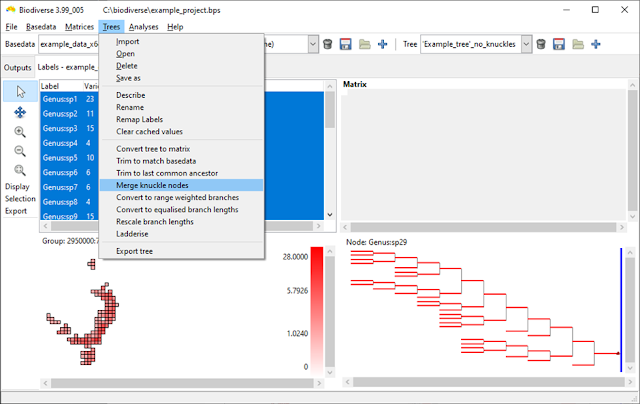We are pleased to announce the release of Biodiverse version 4.0.
Versions for Windows, Mac and Linux (Ubuntu) are available and can be accessed via https://github.com/shawnlaffan/biodiverse/wiki/Downloads
Installation instructions are at https://github.com/shawnlaffan/biodiverse/wiki/Installation
Version 4.0 represents 52 issues closed across 752 source code commits. 260 files have been changed.
Highlights of the changes since version 3.1 are at https://github.com/shawnlaffan/biodiverse/wiki/ReleaseNotes#version-40, and the related blog posts can be accessed via https://biodiverse-analysis-software.blogspot.com/search/label/Version4
A more detailed listing of the closed issues is at https://github.com/shawnlaffan/biodiverse/milestone/17?closed=1
Shawn Laffan
26-Nov-2022
For more details about Biodiverse, see http://shawnlaffan.github.io/biodiverse/
For a list of some of the analyses Biodiverse has been used for, see https://github.com/shawnlaffan/biodiverse/wiki/PublicationsList
You can also join the Biodiverse-users mailing list at https://groups.google.com/group/Biodiverse-users or start a discussion at https://github.com/shawnlaffan/biodiverse/discussions









